B2B technology providers undertake rebranding projects for various reasons. And over the course of the hundreds of rebrands Bluetext has executed, we’ve heard them all: M&A activity, market and competitive shifts, organizations outgrowing their current brand, a desire for updated visuals, you name it.
Often, these rebrands include refreshed creative elements – a new logo, name, and website – to help amplify the business’s marketing efforts, drive market growth, and enhance brand positioning. When prioritizing the visual components of a rebrand, the PR and communications portion can be overlooked.
However, maximizing the near- and long-term benefits of a rebrand requires that PR and communications strategy be incorporated from day one. When supporting clients through a B2B rebrand, Bluetext ensures that PR and communications are involved from the start of the process. Because there is a story to be told to all your stakeholder audiences —a story that extends beyond a new logo, CVI, and website.
Tactical components of a robust PR and communications rollout require a steady cadence of activity, including:
- An anchor press release and announcement strategy to create momentum
- Social media strategy and execution
- Thought leadership (SME bylines + executive visibility)
- Event speaking and award program execution
- Customer testimonials
These elements comprise the three pillars of any successful PR and communications B2B rebrand strategy: amplification, acceleration, and assurance.
Amplification
Rebrands offer businesses unique opportunities to highlight their evolution. They serve as a springboard to amplify companies’ core strengths in new, compelling ways to current and prospective clients.
When ideating on how to make a splash and drive attention to the rebrand, companies should highlight how their solutions are pushing the industry forward and solving tangible client problems.
This pillar should include three tactics:
- Social media posts that tease the enhanced capabilities of the rebranded business in the lead-up to the announcement, driving interest and intrigue. Following the launch, social channels should be used to help sustain momentum.
- An anchor press release that announces the new brand’s creation, how the new company addresses critical challenges in the market, and why the new entity will be better positioned to service clients and provide innovative solutions for new customers.
- Newsjacking, i.e., rapid-response media relations, provides opportunities for company spokespeople to speak with journalists on key industry topics and articulate how the company is addressing and thinking about these market trends.
Acceleration
Amplifying the rebrand announcement is critical to increasing awareness of the new company and its offerings. Once you have the audience’s attention, the next step is communicating how this rebrand will accelerate growth and drive value for the company and its clients.
Rebrands should reframe the company’s position in the market while demonstrating its momentum and ambition. In other words, what is the business looking to achieve? How does it plan to grow? By highlighting early milestones and client successes, the company can map out its desired trajectory for the months and years ahead.
Answering these questions can be accomplished through:
- A Subject Matter Expert (SME) Thought Leadership program to highlight the organization’s areas of expertise and detail how the new brand is pushing the industry forward and addressing market challenges in ways not previously possible while clarifying the mission of the new brand.
- Speaking at conferences and pursuing industry awards. These are useful avenues to reinforce the company’s new market position, validate the business’ latest offerings and also serve as respected forms of recognition within the industry.
- Highlighting customer successes that reflect the values of the new brand while offering tangible examples of early successes.
Assurance
With any change comes a degree of uncertainty. However, that doesn’t mean that business operations will be altered. The last pillar to any successful PR and communications rollout is assuring all stakeholders – clients, employees, and investors – that day-to-day operations will not change, but instead grow and thrive.
Articulating to these stakeholders how the new company will be a positive disruptor without causing negative disruption is crucial.
For employees, the rebrand should energize workers and reinforce the organization’s values. Empower them to provide details of the rebrand through a social advocacy campaign that includes brand-aligned content, personal stories, and messaging examples that they can use as guidance for their posts.
For investors, it’s essential to demonstrate how the rebrand will strengthen the company’s capabilities to deliver value and adapt to a changing market landscape.
When undergoing a rebrand, organizations that effectively execute these three foundational PR pillars will educate key audiences and generate excitement about the new company. These PR strategies and tactics should fold into a holistic brand evolution approach. To learn more about how Bluetext executes successful PR and communications B2B rebrand rollouts, follow us on LinkedIn or contact us today.
In a marketing world driven by personalization, relevance, and precision, a one-size-fits-all approach no longer cuts it. As markets mature and buyers demand deeper expertise, more global CMOs are turning to a proven strategy to break through the noise: verticalization.
Rather than positioning their products or services in broad horizontal terms (e.g., “project management software” or “cloud security”), top SaaS and services brands are embracing industry-specific go-to-market strategies that speak directly to the pain points, regulations, and nuances of distinct verticals like healthcare, government, financial services, or manufacturing.
And the results? Higher win rates, stronger brand affinity, and shorter sales cycles.
What Is Verticalization—and Why Now?
Verticalization means tailoring your entire marketing and sales motion—messaging, content, campaigns, and even product features—to the needs of a specific industry.
It’s more than just inserting an industry name into a landing page. It’s about showing buyers that you understand their world—their compliance requirements, their legacy systems, their KPIs—and that your solution was built with their unique context in mind.
With B2B decision-makers increasingly tuning out generic messaging, brands that go deep rather than wide are standing out.
Why CMOs Are Leaning In
Global marketing leaders are investing in verticalization because it delivers measurable, strategic advantages:
1. Relevance that drives resonance
Generic messaging may sound safe, but it rarely inspires action. Tailored industry messaging helps buyers see themselves in your story—and moves them further down the funnel.
2. Faster sales cycles
Industry-aligned sales enablement tools (e.g., vertical case studies, ROI calculators) help reps build trust faster and reduce time spent educating prospects on fit.
3. Better content performance
Industry-specific thought leadership and gated content drive higher engagement and conversion rates, especially in ABM or outbound campaigns.
4. Stronger differentiation
In crowded categories, vertical fluency sets you apart. Buyers don’t just want software—they want solutions built for them.
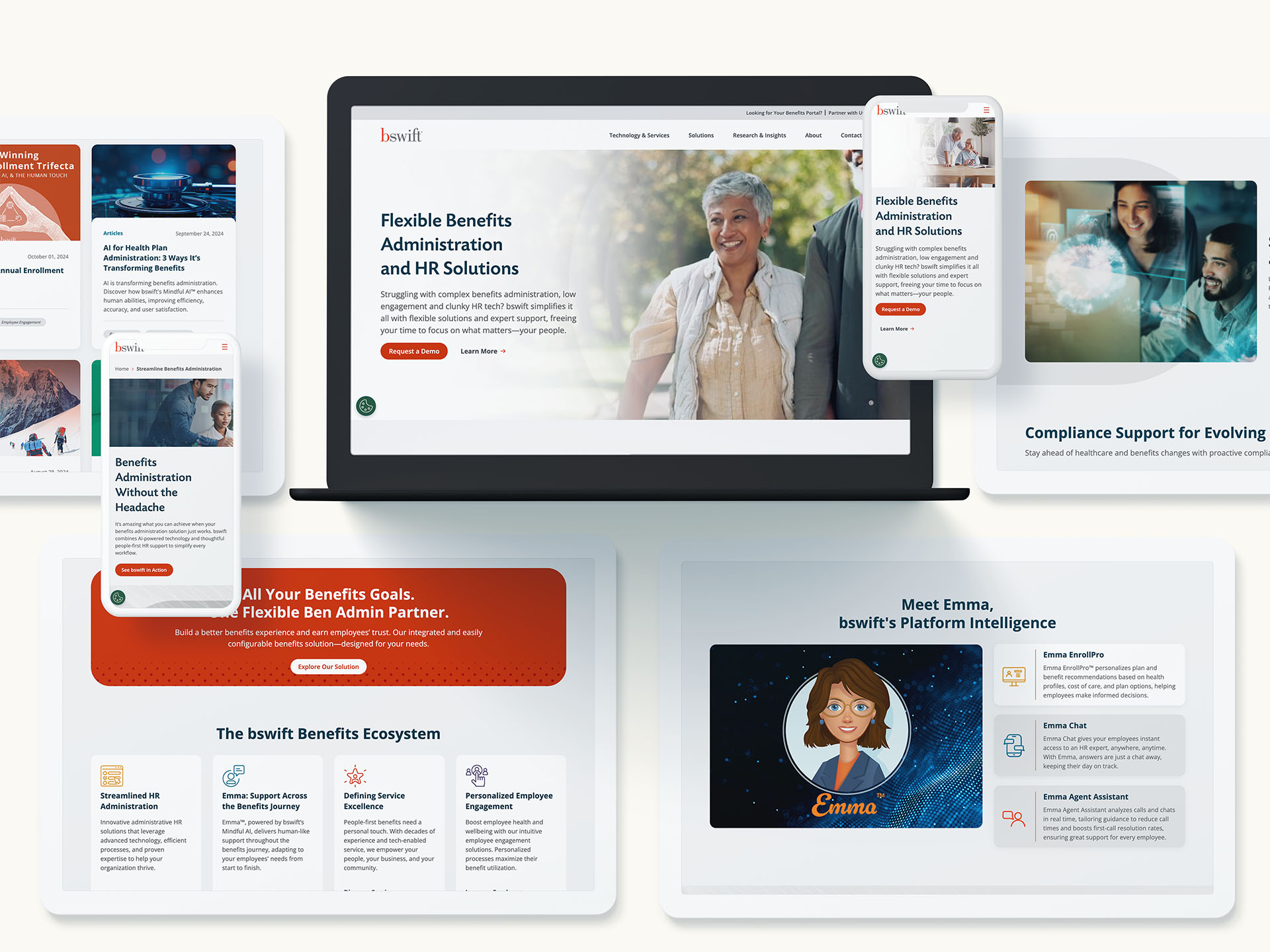
What Verticalized Marketing Looks Like in Practice
To make verticalization work, brands need to operationalize it across the marketing ecosystem:
1. Dedicated industry teams or pods
Many global CMOs are standing up “vertical marketing managers” or small pods that own campaign development, content calendars, and sales enablement for a given sector.
2. Industry-tailored buyer journeys
From awareness to conversion, each touchpoint should reflect the language, needs, and challenges of that specific industry—whether it’s a white paper for healthcare CIOs or a nurture flow for state-level procurement teams.
3. Customized web experiences
Landing pages, homepage segments, or entire microsites built for individual industries can dramatically improve engagement and conversion.
4. Sales and marketing alignment
Ensure that industry-specific marketing efforts are tightly integrated with sales motions. The messaging used in campaigns should map directly to the conversations happening in the field.
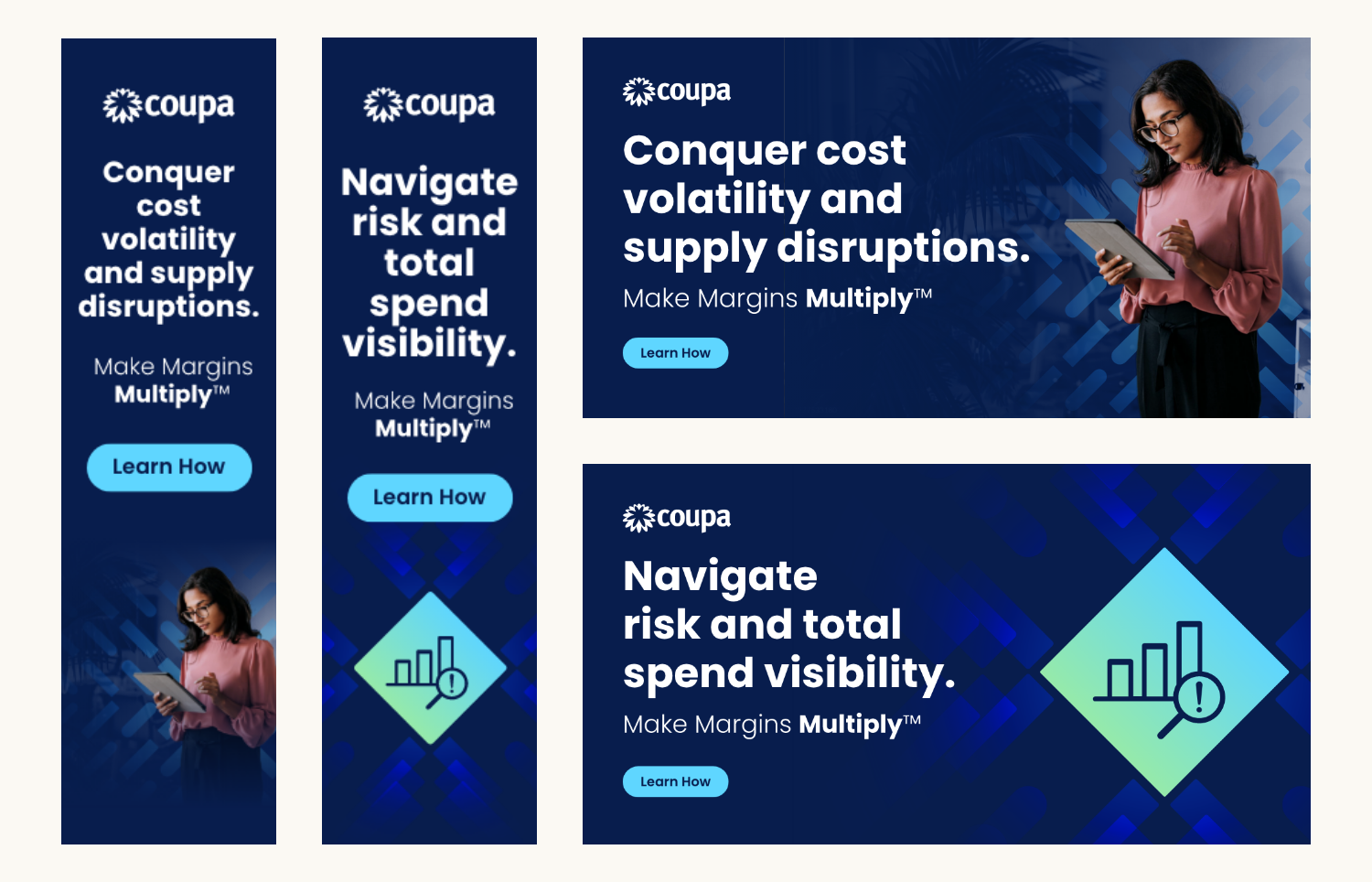
Deep Messaging, Not Just Different
Verticalization isn’t a find-and-replace exercise. Buyers can smell inauthenticity. To be effective, your marketing must show true domain expertise.
That means:
- Speaking to regulatory realities (e.g., HIPAA, FedRAMP, PCI-DSS)
- Referencing industry-specific workflows or pain points
- Using metrics that matter to the sector—whether it’s uptime, throughput, cost per bed, or citizen satisfaction
Collaborating with subject matter experts, leveraging customer testimonials, and co-creating with vertical influencers can help you avoid surface-level messaging.
How to Scale Without Losing Focus
A common concern with verticalization is that it can become complex and resource-intensive. The key is building systems that allow for scale and specificity:
- Create modular campaign assets (e.g., hero videos, pitch decks, email sequences) that can be easily adapted per vertical.
- Develop a flexible brand framework that preserves consistency while enabling regional or industry customization.
- Use a centralized DAM and CMS to manage, update, and distribute vertical-specific content across global teams.
- Define a rollout roadmap—you don’t need to verticalize for every industry at once. Start with your top-performing or highest-potential sectors.
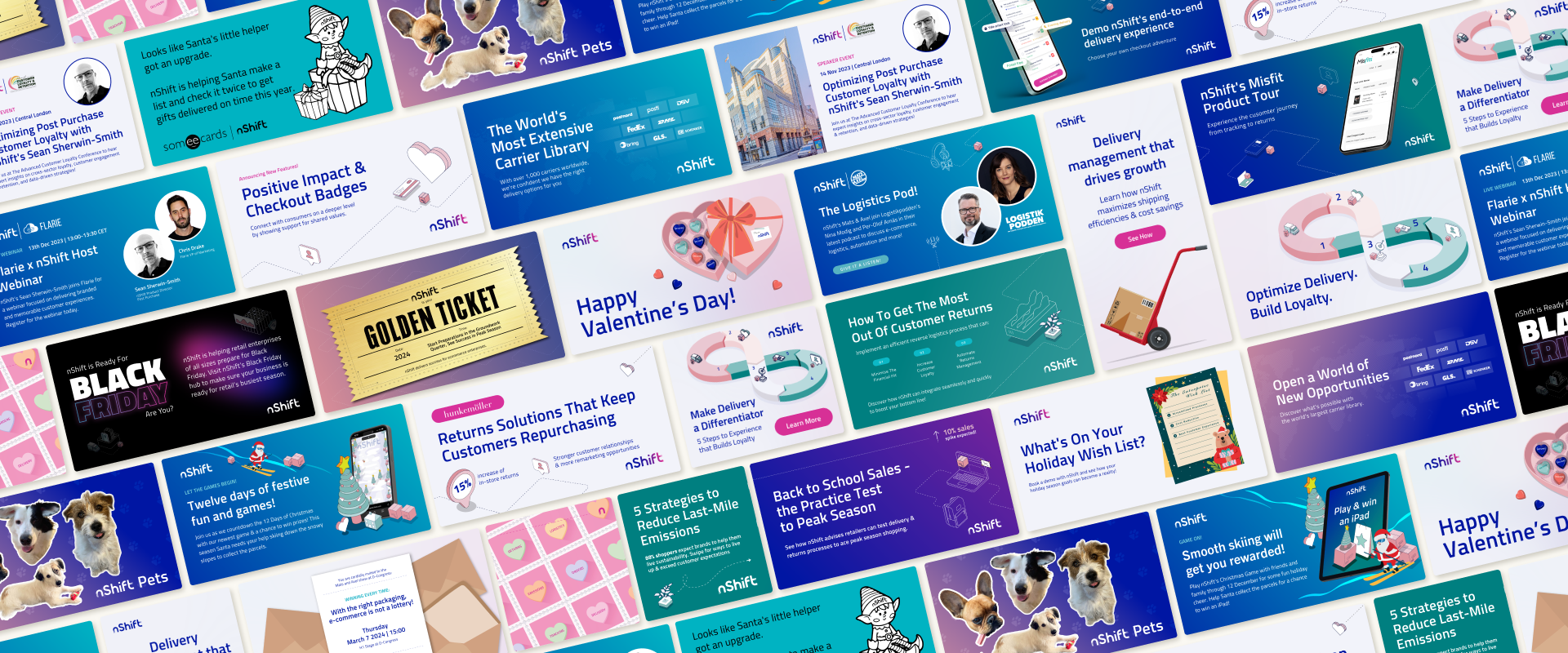
Why It Works
At its core, verticalized marketing works because it meets buyers where they are. It builds credibility, confidence, and conversion power—three things every marketing leader is after.
And in competitive categories where every brand sounds the same, speaking your buyer’s language is no longer a nice-to-have—it’s a strategic imperative.
Want to Build an Industry-Specific Growth Strategy?
Bluetext helps brands reframe their messaging, campaigns, and go-to-market strategies around the industries that matter most. Whether you’re launching into new sectors or scaling vertical programs globally, we build frameworks that drive results. Contact us to start verticalizing your marketing—and winning where it counts.
The generative AI revolution is well underway—and marketers are on the front lines. Since the introduction of GPT-powered tools like ChatGPT, marketers have rapidly integrated AI into everything from content creation and ideation to campaign execution and analytics.
But as adoption accelerates, a bigger question emerges: Are we using it well?
The opportunity is enormous—but so are the risks. Here’s what’s working today, where to tread carefully, and how to build a future-ready marketing stack in the age of GPT.
What GPT Is Changing About Marketing
At its core, GPT technology (short for Generative Pre-trained Transformer) allows marketers to generate human-like content at scale. This has unlocked new possibilities in:
- Content velocity – Faster creation of blogs, product descriptions, emails, and ad copy
- Personalization – Tailored messaging across segments and personas
- Ideation and brainstorming – Campaign themes, subject lines, even visual prompts
- Customer service and chat – AI-powered agents handling FAQs and low-complexity requests
- SEO and keyword strategy – Smart suggestions based on semantic patterns
It’s no longer a question of whether to use GPT—it’s a question of how to use it responsibly and strategically.
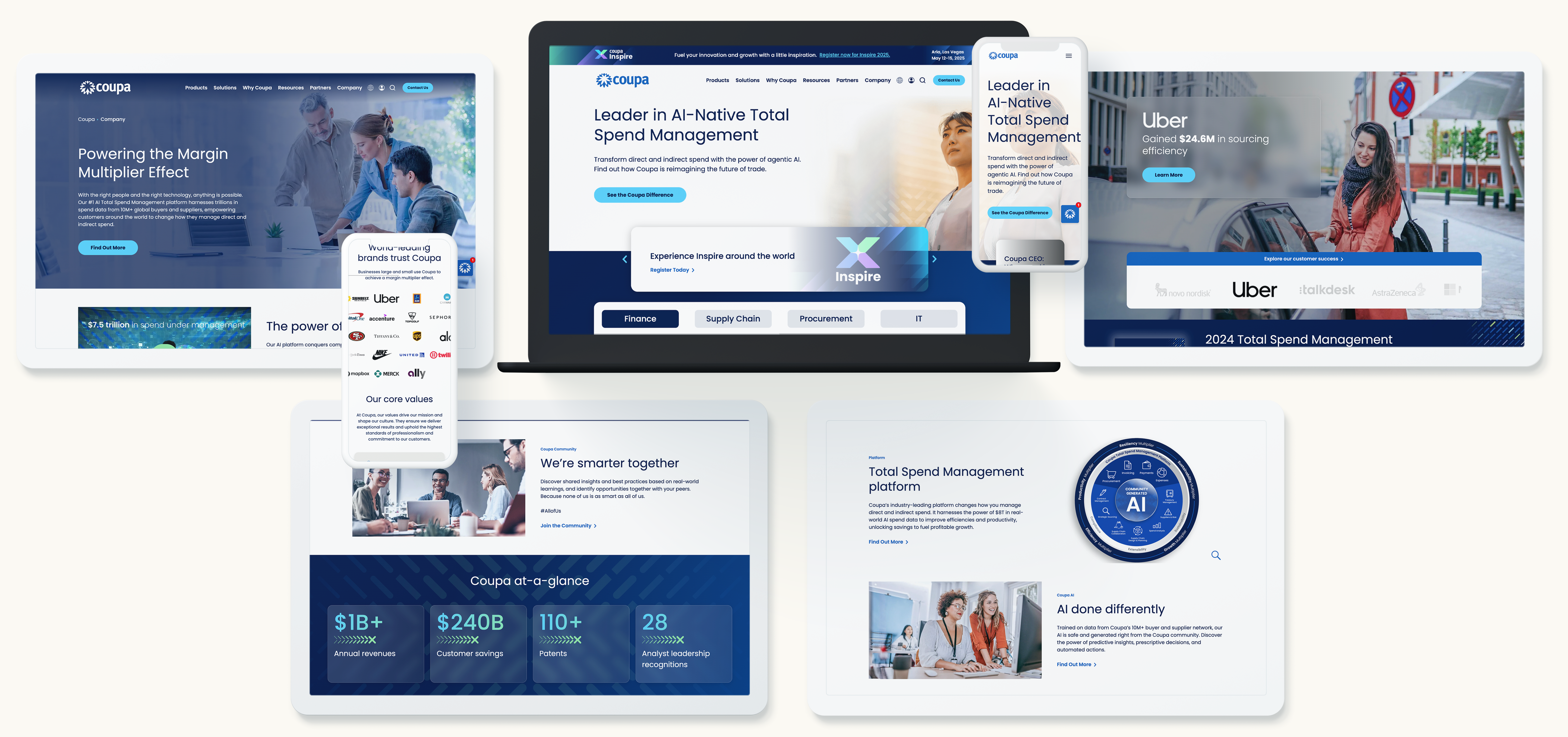

What’s Working Right Now
For many marketers, GPT is becoming a reliable sidekick. Use cases that are delivering real value today include:
- First-draft generation: Letting AI handle the heavy lift of a blank page—for blogs, emails, or social posts—so teams can focus on refinement and brand alignment.
- Summarization and transcription: Turning long-form webinars, internal briefings, or interviews into summaries, takeaways, and content assets.
- Creative brainstorming: Rapidly generating headline variations, campaign taglines, or concept ideas during early planning stages.
- Repetitive content tasks: Writing hundreds of meta descriptions or programmatically varying CTAs for different segments.
- Localized or segmented copy: Drafting region- or audience-specific variations of global campaigns faster than human teams could keep up.
What’s Risky or Overhyped
Despite the hype, GPT isn’t a plug-and-play replacement for marketers. Some areas require caution:
- Factual accuracy: GPT models don’t “know” things—they generate based on patterns. That leads to hallucinations and confidently wrong outputs, especially on niche or time-sensitive topics.
- Brand voice dilution: Without human oversight, GPT can produce copy that feels generic, off-brand, or even contradictory to your tone.
- Ethical and legal gray areas: Questions of disclosure (who wrote this?), authorship, and copyright are still evolving.
- SEO traps: Search engines are growing wary of AI-generated content that lacks originality or value, and duplicate content penalties may apply.
- Compliance and data sensitivity: Sensitive industries (healthcare, finance, government) must be vigilant about what information enters or exits AI platforms.
Marketers who treat GPT like an autopilot risk reputational and operational setbacks. It’s a tool, not a shortcut.
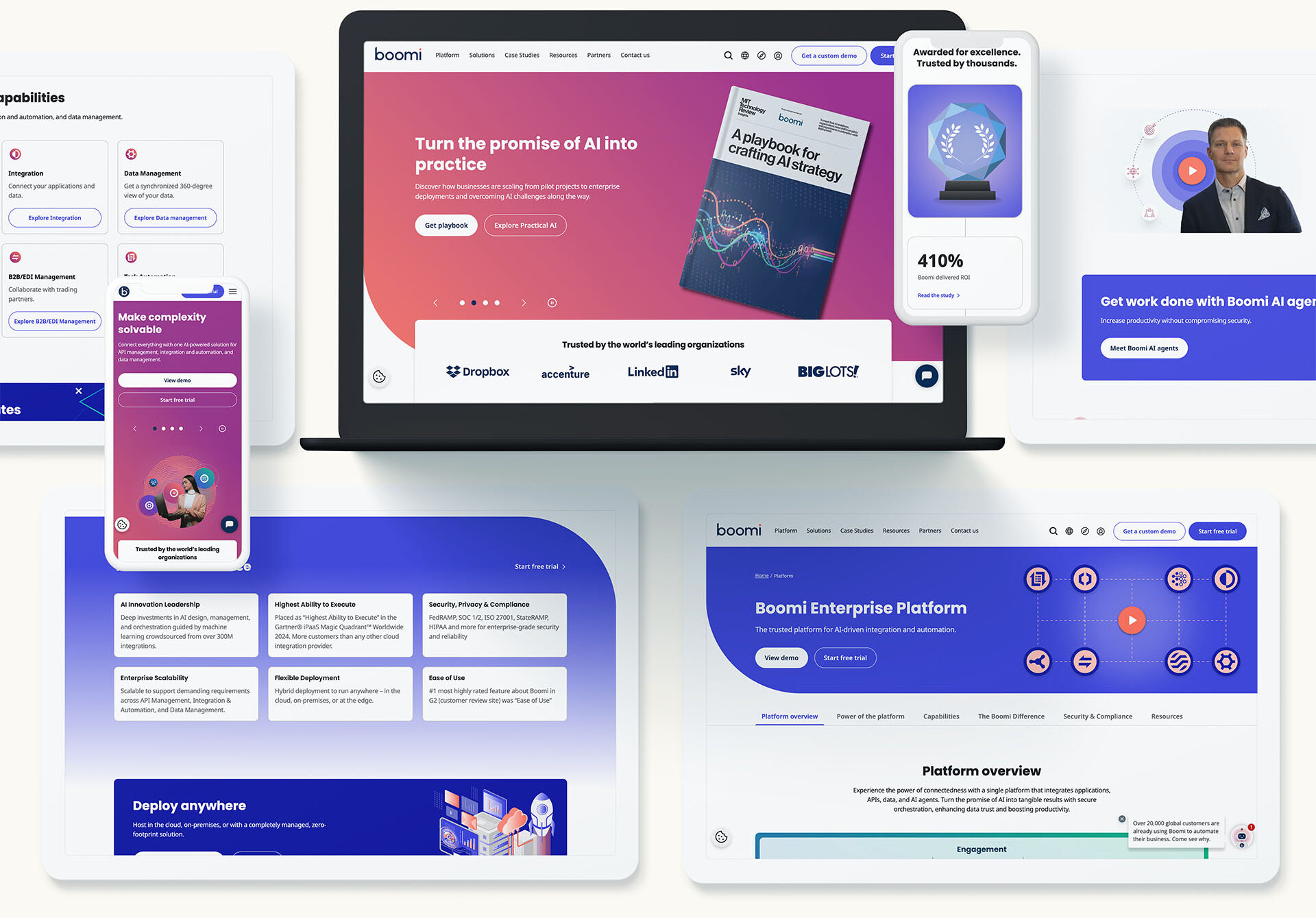

Building a Responsible AI Marketing Stack
To harness GPT effectively, organizations must adopt it deliberately, not reactively. That means establishing the right systems, standards, and safeguards.
1. Human-in-the-loop workflows
Every AI-generated asset should be reviewed, edited, and signed off by a human—especially in regulated or high-stakes environments.
2. AI content governance
Create prompt libraries, tone-of-voice rules, and QA checklists to ensure outputs meet brand and quality standards.
3. Secure tool selection
Favor GPT-powered platforms that offer enterprise-level data privacy, security compliance, and model transparency.
4. Defined use cases
Clearly outline where AI should and should not be used—such as ideation vs. thought leadership, internal drafts vs. public statements.
5. Team training
Equip marketers with prompt-writing best practices and guidance for effectively integrating AI into their workflows.
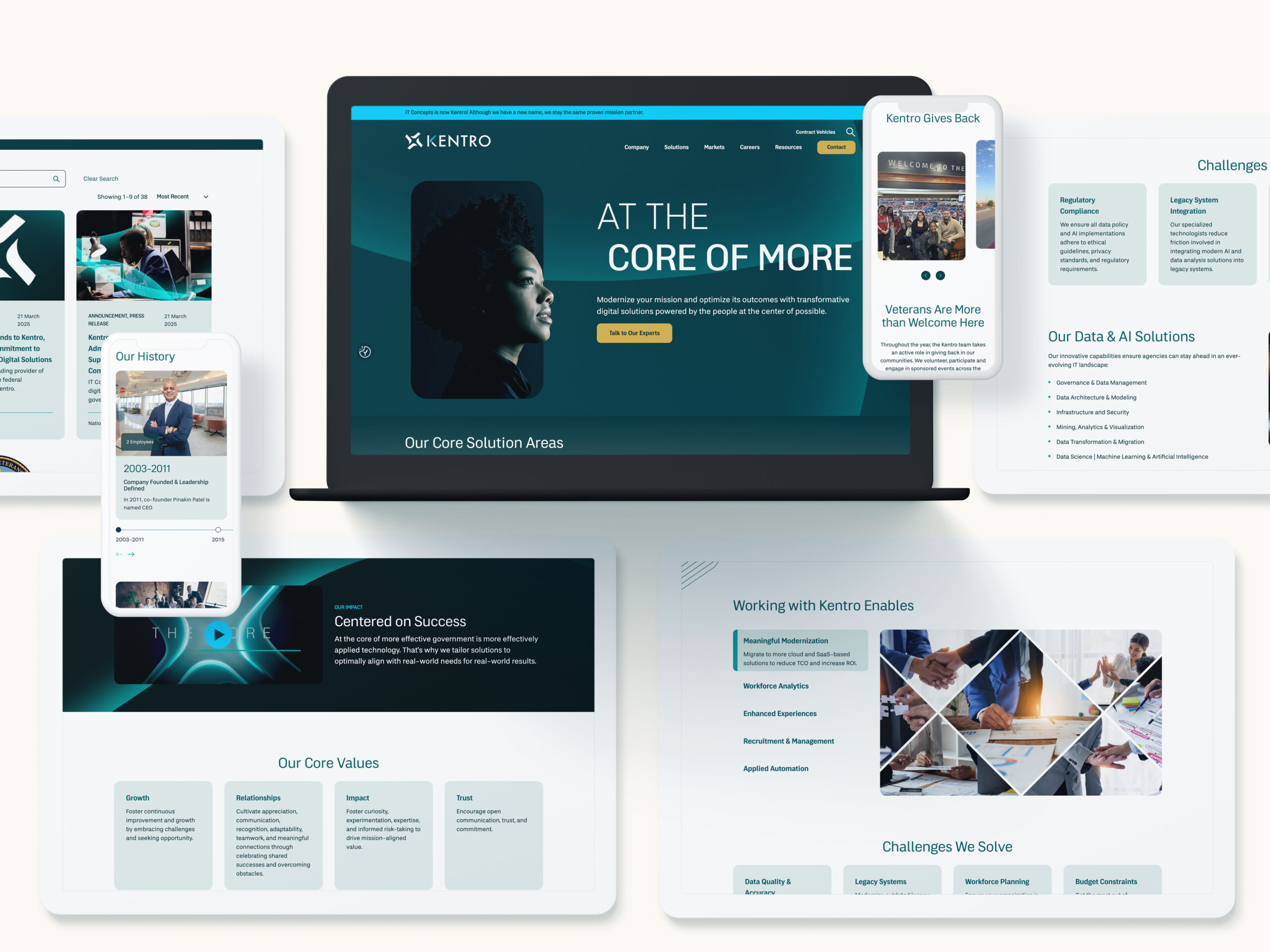



What’s Next: The Future of AI in Marketing
GPT is only the beginning. What’s coming next will expand what marketing teams can do:
- Real-time content adaptation: AI-generated content that evolves live based on user behavior, location, or engagement level.
- Multimodal experiences: Combined text, image, and video generation to streamline asset creation across channels.
- Deeper CRM integration: AI powering more personalized nurture flows and content recommendations within marketing automation platforms.
- Strategic co-pilots: AI tools that help marketers analyze performance data, suggest optimizations, and even A/B test content on the fly.
In short: GPT will go from content creator to campaign collaborator.
Ready to Build an AI-Enhanced Marketing Machine?
Bluetext helps brands responsibly scale generative AI across their marketing ecosystem—bringing speed and creativity without sacrificing strategy, quality, or control. Whether you’re building GPT into your content engine, brand voice, or marketing automation stack, we’ll help you do it right.
Contact us to develop an AI roadmap that enhances your brand, streamlines your campaigns, and sets you up for the next frontier.
As brands expand their reach across borders, the challenge isn’t just going global—it’s staying cohesive while doing it. Because international growth doesn’t mean one-size-fits-all messaging. It means speaking directly to diverse audiences, in different languages, across different cultures—without losing what makes your brand recognizable.
The trick? Localization at scale: building systems that flex for regional nuance without fracturing your brand.
The Risks of Going Global Without a Strategy
We’ve seen it happen—fast-growing companies push into new regions, and suddenly their brand looks and feels different everywhere. The French website has a different tagline. The German social campaign uses off-brand colors. The APAC product sheet calls the same feature by a completely different name.
Without a defined localization strategy, global marketing becomes a game of telephone—with inconsistent messaging, diluted visuals, and confused customers.
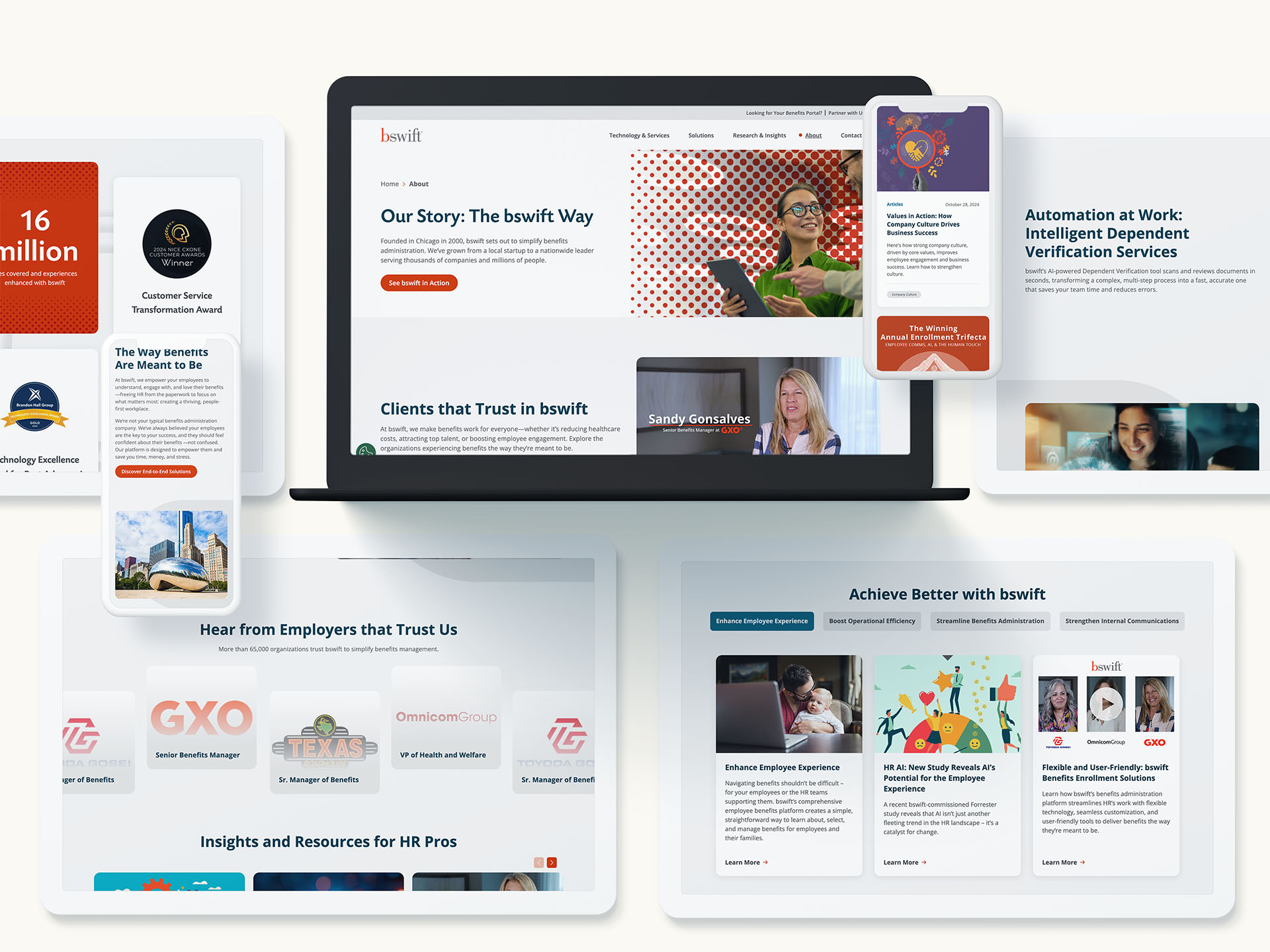


The Brand Consistency Challenge
Brand consistency is about more than logos and fonts. It’s about:
- Unified messaging pillars
- A shared tone of voice
- Consistent product naming conventions
- Visuals that reinforce brand DNA across all platforms
But this consistency gets complicated fast when:
- Teams in different regions are working in silos
- Local agencies interpret branding through their own lens
- Translation is treated as a final step, not a foundational consideration
In short, global expansion without a system invites fragmentation.
A Framework for Scalable Localization
To scale localization without losing control, brands need a structured but flexible framework. Here’s how leading companies do it:
1. Centralized Brand Guidelines, with Built-In Flexibility
Develop a global brand system that clearly defines:
- Core identity elements (logo usage, typography, color palettes)
- Voice and tone rules
- Messaging frameworks and brand pillars
But don’t stop there—include examples of how these can adapt for cultural relevance in local markets.
2. Establish Global vs. Local Ownership
Clarify what’s owned centrally (like key messaging, product naming, or logo integrity) versus what can be modified regionally (like calls to action, visuals, or campaign headlines). This helps local teams move fast without violating global standards.
3. Build a Cross-Functional Governance Model
Set up a process where brand, regional marketing, and localization teams can collaborate, review creative, and ensure alignment across launches.
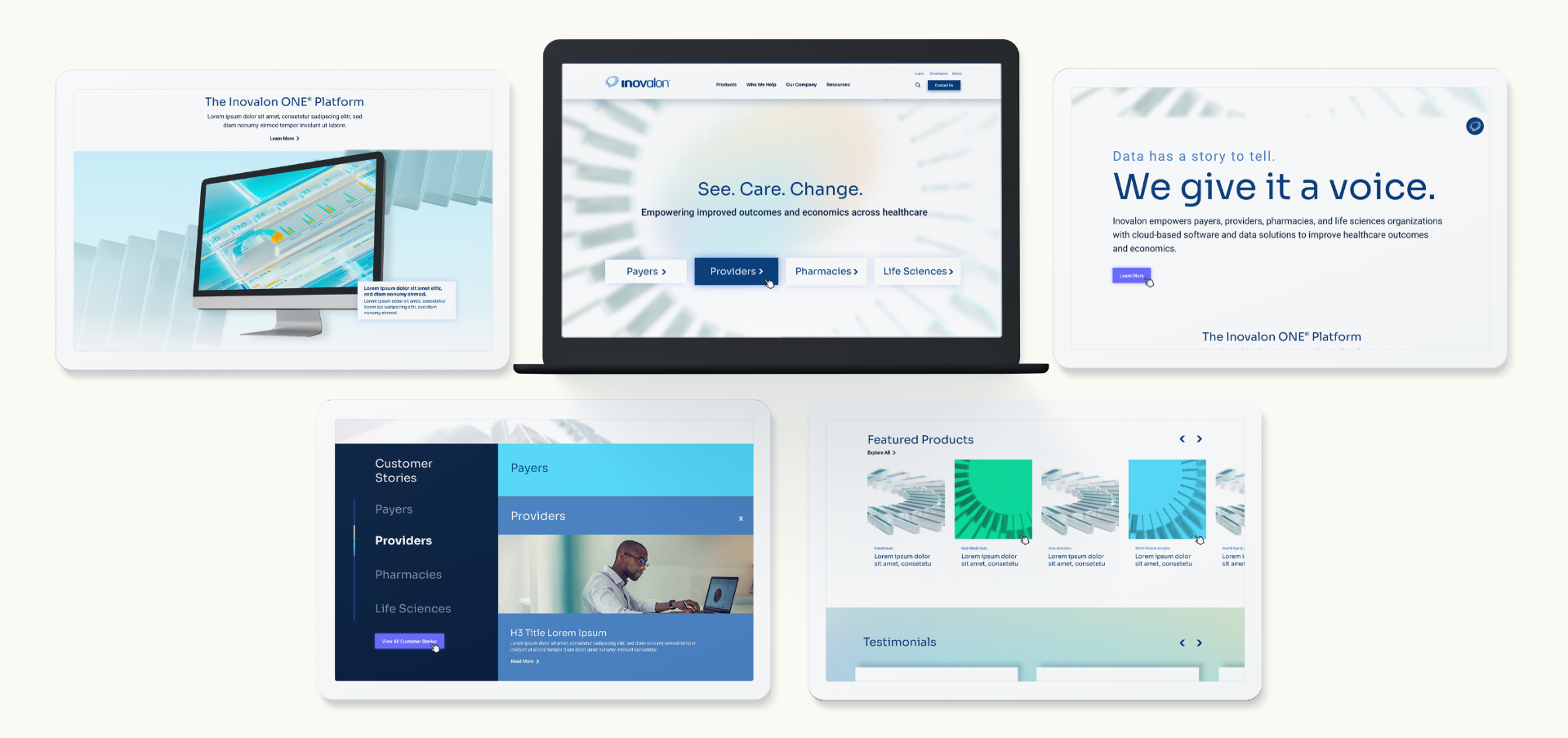

Cultural Relevance Is More Than Translation
Successful localization goes beyond language. It requires cultural fluency—understanding what resonates with each audience.
Consider:
- Adjusting tone and formality for regional expectations
- Rewriting—not just translating—taglines, CTAs, or value propositions
- Avoiding idioms, humor, or visuals that don’t translate across borders
The goal isn’t to replicate. It’s to reinterpret—in a way that maintains the core idea while landing more effectively in-market.
Creative + Operational Best Practices
Localization at scale requires both process and creativity. Here’s how to support both:
- Design reusable creative systems: Create modular templates for web, email, paid media, and social assets that local teams can customize within guardrails.
- Use a global content management system (CMS): A CMS that supports multi-language site versions helps centralize oversight while enabling regional flexibility.
- Invest in a DAM and translation management system (TMS): Organize brand assets and enable consistent translations that are version-controlled, searchable, and easily distributed.
- Train your teams: Provide onboarding and ongoing brand training for regional marketers, translators, and agency partners.
- Monitor and optimize: Use analytics to assess how localized content performed by region—and feed insights back into your system.


The Payoff: A Brand That Travels Well
When you balance consistency with cultural nuance, your brand becomes:
- More trustworthy – Familiarity builds credibility.
- More relatable – Regional teams feel empowered to connect with local audiences.
- More agile – Launches become faster and more repeatable, with fewer missteps.
It’s not just about protecting your brand—it’s about amplifying it across every market you touch.
Need a Global Brand That Feels Local Everywhere?
Bluetext helps brands develop scalable localization strategies that maintain identity while enabling adaptation. From building global campaign toolkits to implementing multi-language websites and brand governance systems, we help you stay consistent—without being rigid.
Contact us to learn how we can help your brand speak the local language, at scale.
In government contracting, the RFP isn’t the starting line—it’s the midpoint. By the time a request for proposal (RFP) hits SAM.gov or an agency portal, the most successful vendors have already been shaping the conversation. Their messaging is familiar. The solutions feel tailored. Their names are top of mind.
Welcome to pre-RFP marketing—the strategic art of influencing the buy before the bid.
Why Waiting for the RFP Is Too Late
Government buyers aren’t making decisions in a vacuum. Long before an RFP is released, agencies are:
- Conducting market research
- Reviewing past performance
- Following industry thought leaders
- Listening to the players shaping public discourse
If your brand only shows up once the formal procurement starts, you’re already behind. Agencies tend to favor vendors they know, trust, and associate with mission fluency. Pre-RFP marketing ensures that you’re in the conversation before requirements are locked in.



What Pre-RFP Marketing Looks Like
This isn’t traditional lead-gen marketing—it’s highly strategic, often narrowcasted, and deeply aligned with procurement timelines. Pre-RFP marketing may include:
- Agency-specific messaging that speaks to mission goals and challenges
- Content marketing aligned to strategic priorities (e.g., zero trust, AI integration, climate resilience)
- Awareness-building campaigns that elevate your expertise in relevant domains
- Executive thought leadership that frames your brand as a solutions partner, not just a vendor
The goal isn’t volume—it’s influence.
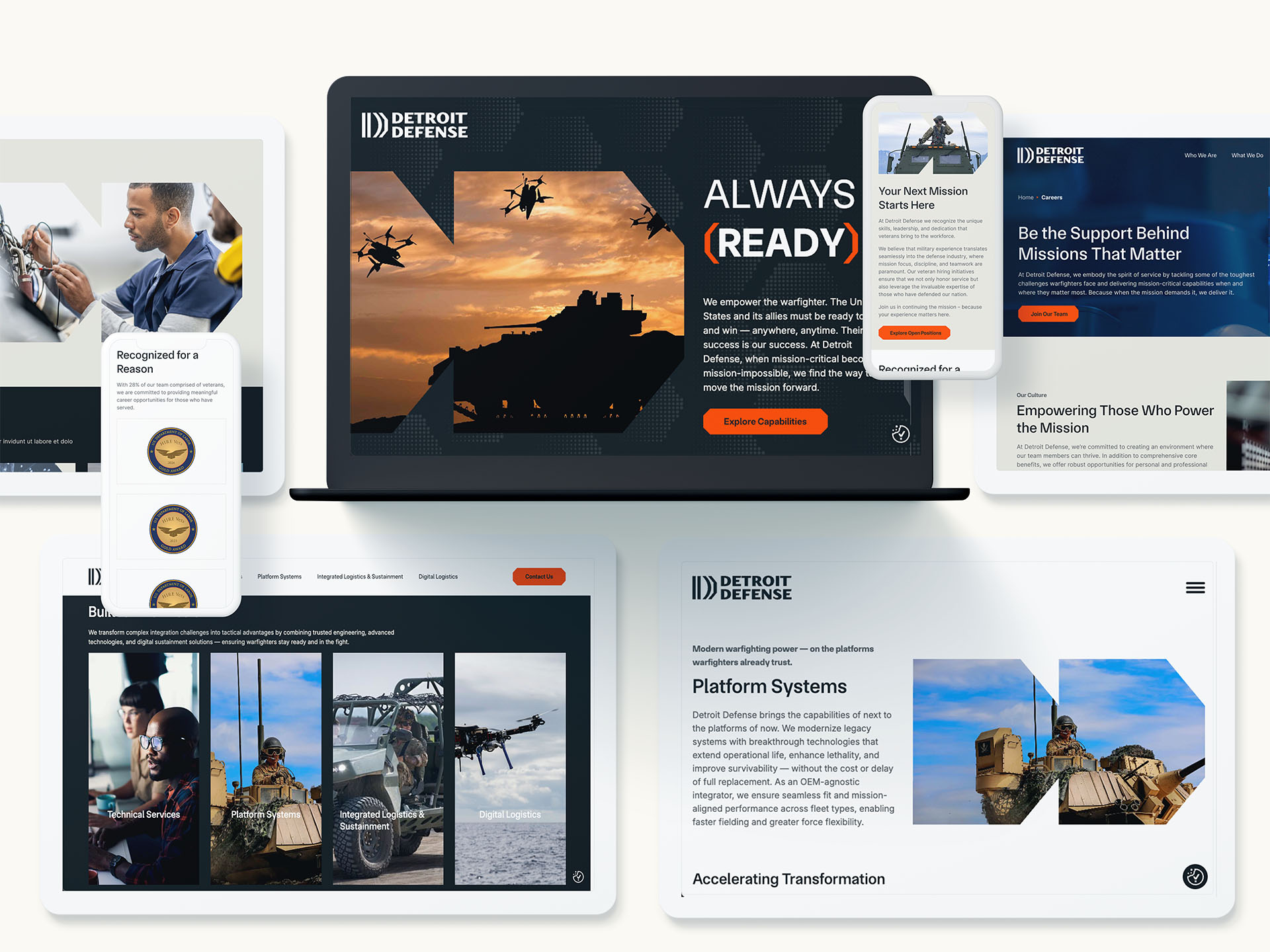

Marketing + Capture: The Dream Team
In the B2G space, marketing should work hand-in-hand with business development and capture teams to create pre-RFP momentum. That collaboration looks like:
- Message alignment based on capture insights, agency intel, and pain points
- Strategic content creation that reinforces key capabilities tied to upcoming procurements
- Campaign timing that builds awareness months—or even years—before the bid drops
- Visual storytelling that mirrors future proposal themes and evaluation priorities
Pre-RFP marketing isn’t a siloed activity. It’s an integral part of shaping opportunity strategy.
Tactical Ways to Influence Before the RFP
Smart pre-RFP marketing combines digital precision with reputational lift. Tactics might include:
- Agency-targeted landing pages or microsites: Showcase case studies, credentials, and capabilities specific to the agency’s needs.
- Mission-aligned white papers, videos, or articles: These signal thought leadership and policy fluency—and can be shared by internal champions.
- LinkedIn targeting and paid campaigns: Reach key agency decision-makers and influencers with tailored content.
- Conference presence and speaking opportunities: Position SMEs and executives at industry events where agency staff are present.
- PR placements in federal media: Establish credibility through earned media on platforms read by procurement leaders.
These assets don’t just inform—they shape perception.




How Pre-RFP Marketing Pays Off
This level of positioning isn’t just about awareness—it influences outcomes. Done right, pre-RFP marketing:
- Establishes name recognition that builds evaluator confidence
- Increases your “trusted partner” status well before proposal submission
- Shapes the RFP itself by aligning with the narratives and needs already in motion
- Sets the stage for better win themes when the proposal does come around
It’s a long game—but it’s a proven one.
Don’t Just Bid. Influence.
Winning in the public sector isn’t about reacting quickly—it’s about planning smartly. The most successful GovCon brands don’t just respond to RFPs. They shape the buying environment before the paperwork even begins.
Want to Lead Before You Bid?
Bluetext helps government contractors develop strategic, pre-RFP marketing campaigns that position them as mission-aligned, agency-ready partners. From messaging architecture to campaign execution, we work alongside your capture and BD teams to create early influence that pays off at award time.
Contact us to get ahead of the next opportunity—and make sure you’re on the shortlist before the RFP even drops.
In today’s B2B landscape, decision-makers aren’t just listening to brands—they’re listening to people. Not celebrities or social media stars, but real experts: engineers, analysts, developers, and operators with deep industry knowledge and the trust of their peers. For marketers, this shift presents a powerful opportunity: activating niche influencers to drive engagement, credibility, and conversions.
Here’s how smart B2B brands are tapping into the power of hyper-relevant voices to lead conversations—and win customers.
The Rise of the B2B Influencer
Influencer marketing is no longer reserved for beauty tutorials and unboxing videos. In the B2B world, influence looks different. It’s a federal cloud architect posting insight on LinkedIn. A cybersecurity analyst sharing zero-day vulnerabilities on X. A logistics manager breaking down efficiency tools on YouTube. These voices may not have millions of followers—but they do have something far more valuable: industry respect and decision-maker attention.
Whether you’re selling enterprise software, aerospace systems, or SaaS solutions for regulated industries, these niche influencers shape perception where it matters most—inside the buying journey.


Who Are B2B Influencers, Really?
Forget the ring lights and sponsored hashtags. The most effective B2B influencers are:
- Subject Matter Experts (SMEs): Engineers, developers, and product leaders who’ve built the solutions others now use.
- Analysts & Advisors: Independent thinkers who interpret market trends and tech shifts.
- Practitioners: Individuals working in the field—public sector tech officers, procurement leads, or operations directors.
- Evangelists: Employees or superfans who naturally share your brand’s vision and value.
They may not be household names, but in their specific communities, they carry serious weight.
How to Identify the Right Influencers
The key to successful B2B influencer marketing is relevance over reach. You’re not looking for a massive audience—you’re looking for the right one. To find them:
- Use tools like SparkToro or Onalytica to surface influencers by topic, keyword, or community.
- Leverage social listening to track who your buyers already follow and engage with.
- Tap into your ecosystem: Look at customers, partners, or internal experts who already have a voice in the market.
Ask: Who is creating content that my buyers trust? Who’s translating complex concepts into accessible insight?


Creative Ways to Activate Niche Voices
Once you’ve identified your influencers, give them a platform—and creative freedom. Some effective tactics include:
- Co-branded thought leadership: Partner on blogs, reports, or social content that blends your brand POV with their credibility.
- Podcasts & webinars: Host niche discussions that invite influencers to share their perspectives with your audience.
- Social media takeovers: Let influencers speak directly to your community from your branded channels.
- Video reviews or demos: Let a trusted voice showcase your product in their own way—particularly effective for technical tools.
Remember: authenticity is everything. Avoid over-scripting or forcing them into your brand voice.
What Makes These Activations Effective?
The best B2B influencer campaigns share a few key traits:
- Authenticity: Let influencers be themselves. It’s their voice that builds trust—not your script.
- Relevance: Niche influencers speak directly to specific buyer segments. That’s what makes them so powerful.
- Consistency: One-off campaigns might raise awareness, but sustained partnerships build loyalty.
Think of influencers not as one-time assets, but as ongoing collaborators who deepen your connection to a target audience.
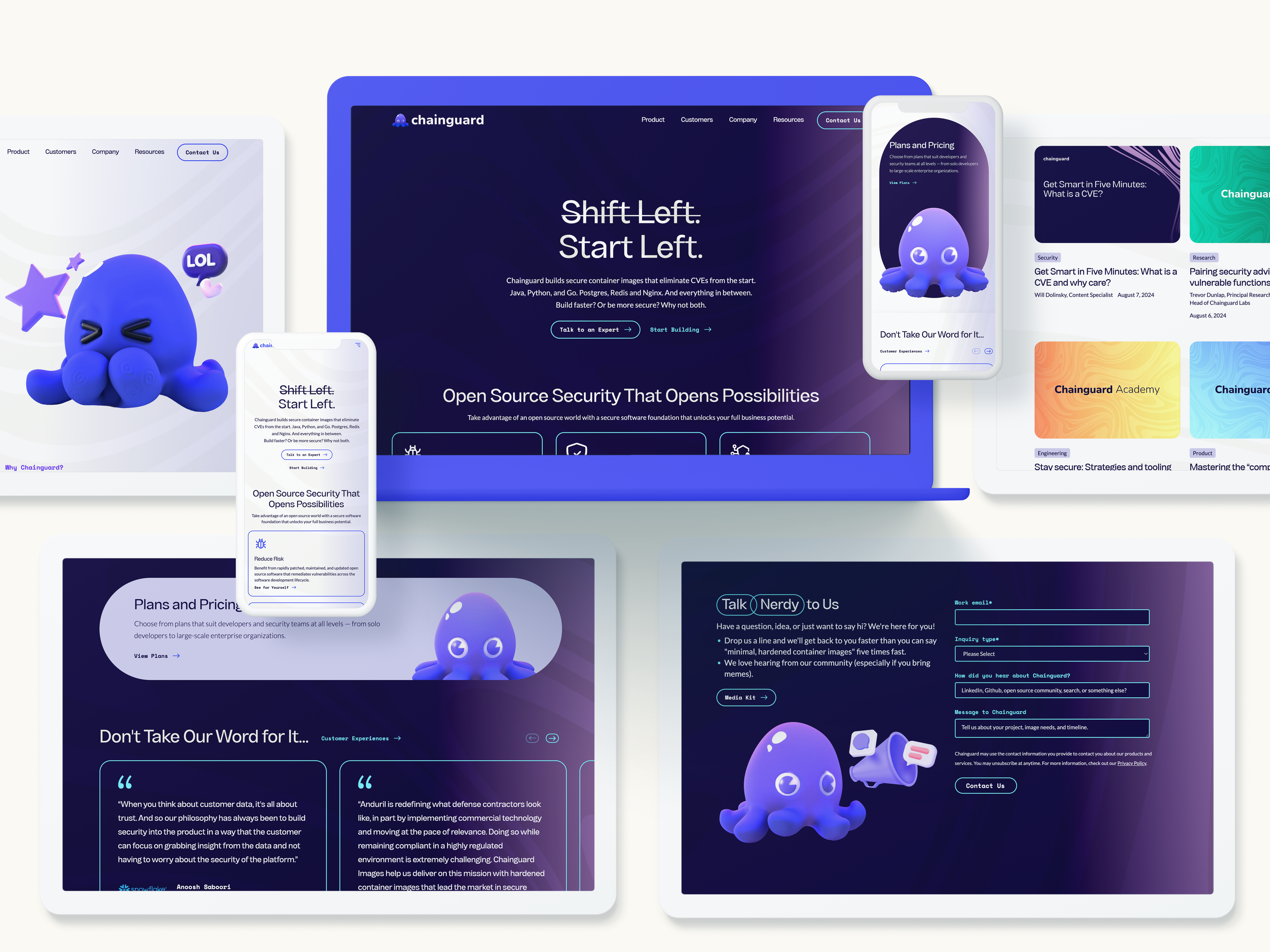

Measuring Success in B2B Influencer Campaigns
B2B sales cycles are long, complex, and rarely linear—so measuring influencer success goes beyond likes and impressions. Instead, look at:
- Engagement from the right audience segments
- Referral traffic to key landing pages or assets
- Influencer-generated content performance over time
- Assisted conversions and pipeline attribution (via UTM tracking or CRM insights)
- Brand sentiment and earned media mentions
And don’t overlook qualitative feedback: the comments, DMs, or offline conversations that signal credibility is taking root.
Influencer Marketing Is Trust Marketing
At its core, B2B influencer marketing isn’t about going viral. It’s about meeting buyers where they are, with voices they already trust. When executed strategically, it doesn’t just boost awareness—it shapes decisions, accelerates journeys, and positions your brand as a true authority within a niche.
Want to Build Your Own Influencer Ecosystem?
Bluetext helps B2B brands develop influencer strategies tailored to their vertical, audience, and goals. Whether you’re looking to launch a full-scale program or test the waters with a single campaign, we can help you activate the voices that matter.
Contact us to learn how we help brands earn trust, one niche voice at a time.
In government contracting, clarity is currency. When every word, capability, and differentiator is under scrutiny, the companies that rise to the top aren’t necessarily the largest or loudest—they’re the ones that speak with precision. In a world of acronyms, mandates, and mission alignment, the ability to articulate your value in a hyper-targeted way is what separates contenders from winners.
Let’s explore why hyper-niche messaging isn’t just a branding preference—it’s a business-winning strategy for B2G organizations.
The Problem with Generic Positioning in GovCon
Generic messaging is a liability in government contracting. Agencies don’t award multi-million-dollar contracts to companies that merely “support innovation” or “deliver secure solutions.” They want partners who understand their mission, speak their language, and solve their specific pain points.
Contracting officers and evaluation boards are inundated with vendors claiming to “do it all.” If your message isn’t directly aligned with the program goals, agency priorities, and procurement language, you’re likely to be filtered out long before the final downselect.




What Precision Branding Looks Like in B2G
Precision branding is more than buzzwords—it’s about showing a deep understanding of the agency, mission, and problem set you’re trying to support. It’s branding that reflects:
- Mission fluency: Messaging that maps to agency-specific goals, such as modernization, zero trust, or resilient logistics.
- Procurement awareness: A tone and structure that mirrors how contracts are framed and awarded.
- Technical confidence: Specificity around your capabilities, differentiators, and how they align to contract requirements.
This kind of messaging signals you’re not just capable—you’re credible.
Segmentation Strategies for Government Audiences
In the public sector, your audience isn’t “the government”—it’s a web of stakeholders, each with different concerns. Hyper-niche messaging starts with segmentation. Effective B2G segmentation can include:
- By agency or department: Tailoring messages for DHS, VA, DoD, or HHS based on their unique missions and tech stacks.
- By mission area: Whether it’s cybersecurity, digital transformation, healthcare delivery, or ISR, speak to the problem, not just the platform.
- By role: Program managers want operational outcomes; contracting officers want clarity and compliance.
This approach enables your BD, capture, and marketing teams to deliver the right message at the right time—every time.



Building Trust Through Tailored Messaging
In government contracting, trust drives procurement decisions. Precision branding helps build that trust by showing that you’ve done your homework. Tailored messaging demonstrates:
- Understanding of agency challenges
- Familiarity with prior contract awards and initiatives
- Ability to integrate with existing systems and workflows
Messaging that speaks directly to a program’s needs helps pre-sell your value well before the RFP drops—and can be the deciding factor in whether you get on the bidder’s shortlist.
Supporting Pursuits Through Smart Brand Architecture
When every pursuit is unique, your brand needs to be flexible without losing cohesion. Precision branding allows you to:
- Deploy microsites or campaign pages for specific agencies or programs.
- Align visuals and language across BD collateral, white papers, and proposal materials.
- Build modular messaging systems that scale from digital campaigns to in-person orals.
This kind of architecture supports faster spin-ups, more aligned capture efforts, and consistent storytelling across the entire business development funnel.
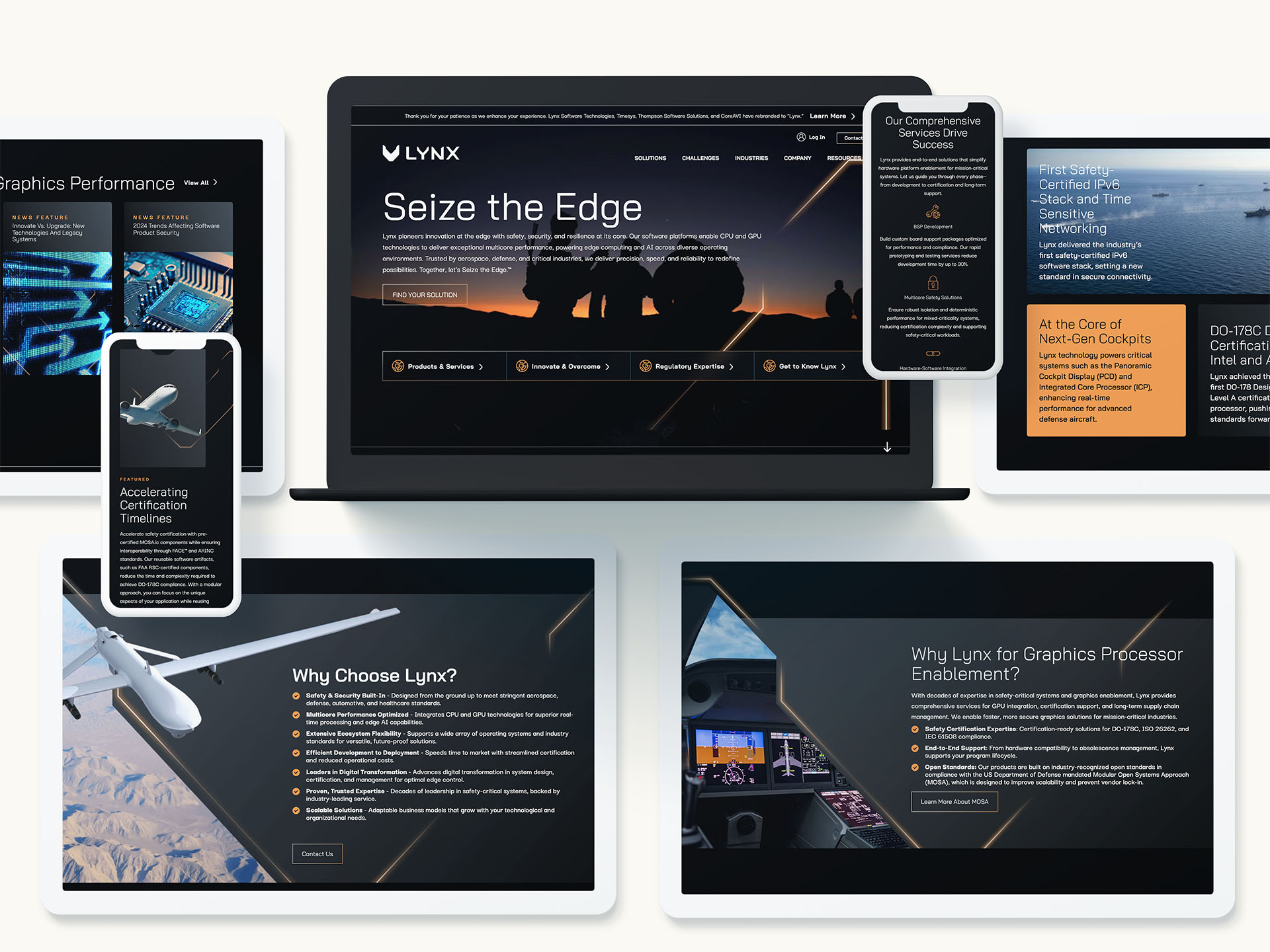

Why It All Matters for Winning Contracts
At the end of the day, precision branding is about outcomes. Tailored messaging can:
- Accelerate procurement cycles by removing confusion and building confidence.
- Improve proposal win rates by resonating more clearly with evaluators.
- Differentiate your solution in a crowded field of government vendors.
In the complex, competitive world of GovCon, vague promises won’t win big contracts. Specificity, strategy, and segmentation will.
Let’s Talk Precision
Looking to refine your message and win with more intention? Bluetext helps government contractors position with purpose—through hyper-targeted messaging, modular brand systems, and smart creative built for the B2G space.
Contact us to learn how we can help you speak the language of your next big win.
The digital marketing world is preparing for a major shift: third-party cookies are on their way out. While the writing has been on the wall for some time—thanks to growing privacy concerns, regulatory pressure, and browser-level changes—the final countdown is now in motion. For B2B marketers, this change isn’t just a technical update; it’s a signal to rethink how we connect with audiences, measure success, and build meaningful digital campaigns in a privacy-first landscape.
So what does a cookieless future really mean for B2B marketing teams? And how should companies adapt?
Why the Cookie Is Crumbling
Third-party cookies have long been the backbone of many digital marketing strategies. They’ve enabled advertisers to track user behavior across sites, build robust audience profiles, serve retargeting ads, and measure multi-touch attribution.
But between data privacy regulations (like GDPR and CCPA), increased consumer scrutiny, and decisions by major players (Google, Apple, Mozilla) to block or phase out third-party cookies, marketers can no longer depend on these trackers to deliver precision targeting.
Unlike in B2C, where massive datasets and behavioral signals are more readily available, B2B marketers often work with smaller audiences, longer buying cycles, and more complex decision-making processes. The loss of third-party cookies only heightens the need for thoughtful, compliant, and relationship-based approaches.



What’s at Stake for B2B Marketing Teams
In a post-cookie environment, several key capabilities are at risk:
- Audience targeting precision – Building lookalike or intent-based audiences becomes more difficult without access to third-party behavioral signals.
- Retargeting – Following up with anonymous site visitors through programmatic channels is less reliable or even impossible.
- Attribution tracking – Multi-channel attribution models may break down without the ability to track users across sessions and domains.
- Lead nurturing automation – Third-party data often feeds into segmentation logic for account-based and intent-driven campaigns.
This shift forces B2B marketers to re-examine how data is collected, stored, and activated—and it puts renewed emphasis on first-party data, consent, and creative execution.
Privacy-First Alternatives Built for the Future
The end of third-party cookies doesn’t mean the end of personalization or targeting—it simply requires a smarter, more ethical approach to doing so. Here’s where B2B teams should focus their attention:
1. First-Party Data Strategy
First-party data—information your audience shares directly with you—is now your most valuable asset. This includes:
- Website interactions
- CRM and sales data
- Email engagement
- Event participation
- Content downloads or form fills
Building robust lead capture mechanisms, refining gated content strategy, and aligning marketing automation with sales insights are now critical to campaign success.
2. Contextual Targeting
In a world without cookies, where an ad appears can be just as important as who sees it. Contextual targeting uses the content of a webpage to inform ad placement—think serving cybersecurity messaging on a tech policy news site. While not new, this approach has become more precise with AI and NLP advancements and is making a strong comeback in B2B media buying.
3. Identity Resolution and Clean Rooms
Platforms like LiveRamp, The Trade Desk’s UID2.0, and Google’s PAIR are offering new ways to match audiences using encrypted first-party identifiers. Meanwhile, data clean rooms allow for privacy-safe collaboration between advertisers and publishers by enabling targeting without exposing raw user data.
These solutions require careful vetting and often demand more technical investment, but they provide viable paths to compliant targeting and measurement in B2B environments.
4. Platform-Based Targeting
As third-party cookies disappear, B2B marketers will increasingly lean on platforms that control their own ecosystems—think LinkedIn, Google, Meta, and industry-specific programmatic networks. These walled gardens have deep first-party data pools and increasingly sophisticated ad tools. However, marketers must balance effectiveness with cost and limited visibility into audience behavior outside those platforms.


What B2B Marketers Should Be Doing Now
With the sunset of cookies no longer hypothetical, proactive planning is essential. Here are the immediate steps B2B teams should take:
- Audit your current martech stack to understand where third-party cookies are being used (from ad targeting to analytics).
- Enhance your first-party data strategy by refining lead capture forms, improving CRM hygiene, and investing in customer data platforms (CDPs).
- Test contextual and native campaigns now to build experience with post-cookie tactics.
- Explore identity solutions with your media partners and vendors to determine what options make sense for your business.
- Revisit attribution models and prepare to rely more heavily on direct engagement metrics and source-based lead reporting.
The End of Cookies Is the Start of Better Marketing
The transition away from third-party cookies is less a threat and more an opportunity—an opportunity to build deeper relationships, center strategy around consent and value, and create more resilient marketing ecosystems.
For B2B marketers, this is the time to get ahead. Waiting until third-party cookies are fully deprecated means playing catch-up in a game already in motion. The brands that win in this next phase won’t be the ones that cling to old tactics—they’ll be the ones that adapt, test, and evolve.



Need Help Navigating the Post-Cookie Future?
Bluetext helps B2B brands build smarter, privacy-first targeting strategies—from first-party data activation to media planning and messaging. If you’re ready to rethink your digital campaigns for the cookieless future, let’s talk.
When a private equity firm acquires a company, the clock starts ticking. Growth targets accelerate, performance metrics tighten, and marketing teams—often lean and under-resourced—are expected to deliver results fast. But unlike traditional businesses, private equity portfolio companies (portcos) face a distinct set of marketing challenges that require a strategic and scalable approach.
From legacy tech stacks to murky messaging, portcos must overcome foundational hurdles to build a modern marketing engine. Here’s a look at the most common challenges—and how to solve them.
High Expectations, Limited Time
Private equity ownership often brings a new level of pressure. Marketing teams must balance long-term brand strategy with short-term performance goals, all while navigating new reporting structures and operational expectations. Unlike a typical company with a 3–5 year brand horizon, portcos are often judged on quarterly metrics, driving a need for speed that can compromise strategy.
This urgency makes prioritization critical. Portcos must identify high-impact marketing opportunities—whether that’s clarifying their messaging, launching a new website, or streamlining their digital campaigns—to make measurable progress, fast.



Brand Confusion Post-Acquisition
Many portcos are acquired mid-transformation. They may have undergone leadership changes, shifted target markets, or expanded their offerings—yet their brand still reflects the company they used to be. This disconnect can confuse customers, dilute differentiation, and weaken marketing ROI.
Compounding the issue, some portcos are the product of roll-ups or mergers, with multiple brands, cultures, and customer expectations colliding under one roof. Without a clear brand architecture and narrative, marketing efforts struggle to gain traction.
Strategic rebranding, messaging workshops, and go-to-market alignment can bring clarity to the chaos and position the business for accelerated growth.
A Patchwork Tech Stack
One of the most overlooked challenges portcos face is their fragmented marketing infrastructure. Often, companies enter PE ownership with outdated or disconnected systems—multiple CRMs, legacy websites, spreadsheets in place of automation platforms, and inconsistent analytics tracking.
This patchwork approach stalls scalability. It makes personalization difficult, breaks campaign attribution, and undermines confidence in reporting. Worse, it creates operational drag when every minute counts.
An early-stage digital audit—assessing martech tools, CRM integrations, analytics setup, and automation workflows—can lay the groundwork for a performance-ready marketing engine.



Unclear or Undifferentiated Value Propositions
It’s common for portcos to lack a well-defined or updated value proposition, especially after acquisition. The business may be expanding into new markets, offering new services, or pursuing new customers—yet their messaging hasn’t caught up.
This gap often shows up on the homepage. If a prospective customer or investor can’t understand what the company does and why it matters within five seconds, they move on.
To avoid that drop-off, portcos need messaging that resonates with buyers and aligns with business strategy. Positioning exercises, persona development, and competitive messaging frameworks help clarify the value prop and give marketing a strong foundation to build from.
Resource-Constrained Marketing Teams
In many portcos, the marketing function is a small team—or a single individual—expected to manage everything from lead generation to website updates to investor presentations. While agile, these teams often lack the bandwidth or specialized expertise to execute complex campaigns at scale.
This creates risk. Without a strong partner or internal support, critical gaps in strategy, design, data, or digital performance can hold back growth.
Building a hybrid model—where internal teams focus on strategy and oversight, while external partners handle execution—can be a force multiplier that enables marketing to move faster and smarter.
Internal Misalignment and Change Management
Even the best marketing strategy will fall flat if it’s not aligned across the organization. Many portcos face internal tension between legacy leadership and new PE-backed direction. Sales may resist marketing changes. Product teams may pursue different priorities. Leadership may hesitate to invest in brand-building.
Change management is key. Marketing leaders must build internal consensus, align stakeholders, and ensure everyone is marching to the same strategic beat. Transparent communication, cross-functional workshops, and shared KPIs can help unify vision and accelerate progress.



Turning Challenges Into Competitive Advantage
While the hurdles are real, so is the opportunity. With the right strategy, tools, and support, private equity portcos can build modern marketing engines that not only meet short-term growth goals, but also create lasting enterprise value.
At Bluetext, we’ve partnered with PE-backed companies across industries to streamline operations, sharpen positioning, modernize digital presence, and generate measurable results—fast. Whether you’re a PE firm looking to elevate your portfolio or a portco ready to modernize your marketing, Bluetext can help. Let’s talk about how we can accelerate your growth.
As privacy regulations tighten, precision targeting becomes harder—here’s how to execute effective ABM without crossing data compliance lines.
The New Landscape of ABM and Data Privacy
Account-Based Marketing (ABM) has become a go-to strategy for B2B marketers aiming to deliver personalized, precise campaigns tailored to key accounts. The promise of ABM lies in its ability to engage decision-makers with highly relevant messaging and tightly focused tactics.
However, the growing wave of data privacy regulations—including GDPR in Europe, CCPA and CPRA in California, and others worldwide—is reshaping how marketers can collect, use, and share data. These laws, designed to protect consumer and business privacy, have introduced new challenges for ABM’s reliance on granular data.
In this evolving landscape, the question emerges: How can marketers maintain ABM’s effectiveness while staying fully compliant and respecting privacy? This post explores practical strategies and privacy-friendly approaches to ensure your ABM campaigns continue to deliver results without crossing data compliance lines.
The Impact of Privacy Regulations on ABM
Privacy laws place clear limits on collecting personal data without consent, restricting marketers from using many traditional data sources that ABM once depended on. The decline of third-party cookies, limitations on tracking across devices, and increased user control over data permissions have diminished marketers’ visibility into customer behaviors.
These changes affect ABM in several ways:
- Reduced access to behavioral and intent data from third-party platforms.
- Challenges in tracking individual contacts across multiple touchpoints.
- Necessity to obtain explicit consent before processing certain types of personal data.
Traditional hyper-targeted ads and behavioral retargeting tactics must be reevaluated to comply with these new realities.


Rethinking ABM Strategy for Privacy Compliance
The key to privacy-safe ABM is shifting focus towards first-party data—information collected directly from your audience through interactions they initiate and consent to.
Here are some foundational shifts marketers should make:
- Build trusted data sources: Prioritize collecting data through website forms, gated content, webinars, and events where consent is explicit.
- Consent-based marketing: Ensure all communications are compliant with opt-in and opt-out requirements.
- Quality over quantity: Instead of mass data collection, deepen insights on fewer, high-value accounts with verified data.
- Ethical standards: Embed privacy considerations into your marketing ethos to strengthen trust and brand reputation.
Privacy-Friendly Tactics to Power Effective ABM
1. Intent and Contextual Data Usage
While granular personal data becomes scarcer, marketers can harness intent signals and contextual information that do not rely on invasive tracking. For example, analyzing content engagement patterns on your site or leveraging CRM activity can provide rich insights into account interest without crossing privacy lines.
2. Enhanced CRM and CDP Integration
Customer Data Platforms (CDPs) that consolidate and manage first-party data become critical tools. They enable you to securely unify account information, track engagement consent, and enrich profiles based on direct interactions, such as demo requests or content downloads.
3. Account-Based Personalization Without Personal Data Overreach
Use firmographic data—company size, industry, location—and expressed interests to create personalized experiences. Dynamic content and A/B testing can be applied thoughtfully to tailor messaging without needing to overreach into sensitive personal data.
4. Collaboration with Legal and Compliance Teams
Privacy compliance should be a built-in component of ABM campaigns, not an afterthought. Work closely with legal and compliance experts during campaign design and maintain thorough documentation and audits to ensure ongoing adherence to regulations.


Tools and Technologies Supporting Privacy-Conscious ABM
Technology plays a pivotal role in enabling privacy-first ABM. Consider integrating:
- Privacy-first CDPs: Platforms that prioritize consent management and data security.
- Cookieless tracking solutions: Emerging tools designed to measure campaign performance without relying on third-party cookies.
- Consent management platforms (CMPs): Systems that streamline opt-in/opt-out processes and keep audit trails.
Evaluate your technology stack with privacy compliance as a core criterion to avoid risks and foster trust.
Getting Started: Implementing Privacy-Safe ABM Today
Begin your transition to privacy-conscious ABM by:
- Auditing current data collection and campaign practices for compliance gaps.
- Developing a phased roadmap to emphasize first-party data and consent.
- Training marketing and sales teams on privacy regulations and ethical marketing.
- Partnering with agencies and vendors skilled in navigating privacy requirements and agile ABM strategies.
Small, deliberate steps can help your organization adapt without disrupting momentum.



Navigating ABM Success in a Privacy-First World
Privacy regulations are not a passing trend—they represent a fundamental shift in how businesses must approach marketing. ABM remains a powerful strategy, but success now depends on transparency, respect for data, and innovative targeting methods that comply with evolving laws.
By embedding privacy as a core brand value, you not only avoid legal pitfalls but also build deeper trust with your prospects and customers, strengthening long-term relationships.
Ready to navigate ABM in the age of data privacy? Contact Bluetext to develop compliant, effective account-based strategies that drive results while respecting privacy.